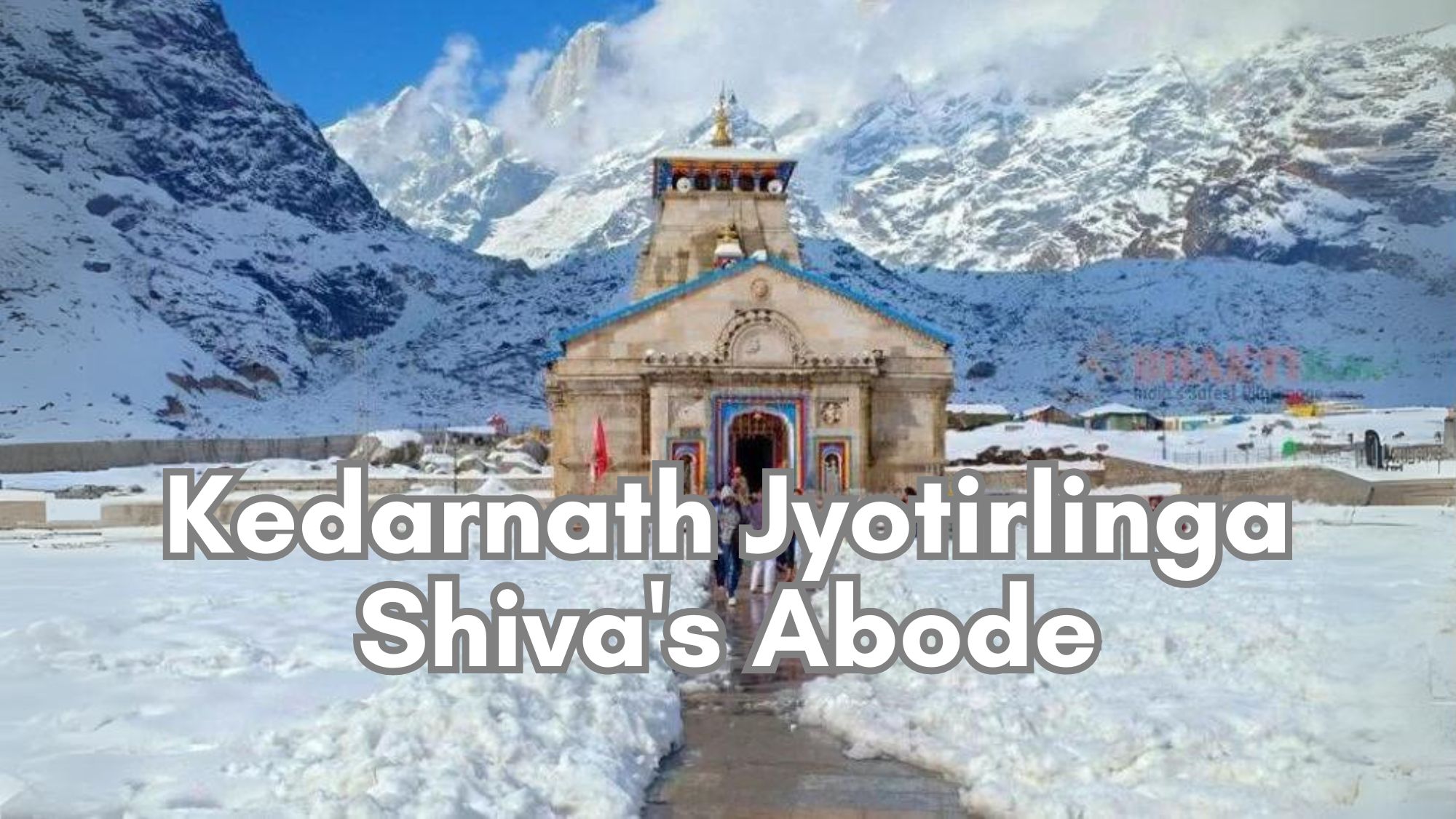Kedarnath Jyotirlinga: Shiva’s Abode

Jyotirlingas are sacred shrines dedicated to Bhagwan Shiva, believed to be places where he appeared in the form of a divine light pillar. There are 12 Jyotirlingas across India, each holding a significant place in devotees’ hearts.
The term “Jyotirlinga” means “column or pillar of light,” symbolising infinity. When Bhagwan Brahma and Bhagawan Vishnu argued over supremacy, Bhagawan Shiva emerged as a column of light, challenging them to find its ends. They were both unable to do so. And the places where these lights fell are where these jyotirlingas are located.
Kedarnath, meaning “Lord of the Field” or “Kedar Khand” region, is located amidst picturesque snowy mountains and lush valleys. The Kedarnath temple, surrounded by scenic beauty, attracts visitors worldwide, not just pilgrims.
Kedarnath holds a significant place among the four major pilgrimage sites, known as the Chota Char Dham, which also include Gangotri, Yamunotri, and Badrinath. These sites are on the bucket list of places to visit for devotees seeking spiritual fulfilment.
What is the Legend of the Kedarnath Jyotirlinga?
According to legend, after the Mahabharata war, the Pandavas sought to cleanse themselves of the sins they committed by killing their own relatives. To do this, they needed to seek forgiveness from Bhagwan Shiva. After a long search, they finally found Bhagwan Shiva at the location where the Kedarnath Jyotirlinga stands today.
However, Bhagwan Shiva was initially unwilling to forgive the Pandavas for their sins during the war. He disguised himself as a bull and hid from them by disappearing into the ground. Despite their efforts, the Pandavas could only manage to pull out parts of Lord Shiva from different places – his hump remained in Kedarnath, his arms in Tungnath, his navel and stomach in Madhyamaheshwar, his face in Rudranath, and his hair and head in Kalpeshwar.
The Pandavas built temples at these five places, known as the Panch Kedars, to worship Bhagwan Shiva and seek redemption from their sins.
Bhagwan Shiva then promised to reside permanently at the sacred spot in the form of a triangular Jyotirlinga. This is why Kedarnath holds such immense significance and is revered by devotees.
What is the Significance of the Kedarnath Jyotirlinga?
Kedarnath Jyotirlinga holds a special place for so many reasons:
- People believe that visiting and worshipping at Kedarnath Jyotirlinga can cleanse their souls and rid them of sins, seeking forgiveness from Bhagwan Shiva.
- Kedarnath is seen as a path to Moksha, freedom from the cycle of rebirth. Pilgrims hope to achieve enlightenment and liberation by journeying there.
- The Pandavas’ story inspires devotees, emphasising the importance of devotion and perseverance in gaining Bhagwan Shiva’s blessings.
- Surrounded by the stunning Himalayas, Kedarnath offers a serene environment for spiritual reflection, fostering a deep connection with nature and the divine.
- Kedarnath is a vital stop on the Char Dham Yatra pilgrimage route, where pilgrims seek spiritual growth and divine favour by visiting all four sacred sites, including Kedarnath.
Frequently Asked Questions
Q: Is Kedarnath part of Jyotirlinga?
A: Yes, Kedarnath is one of the 12 jyotirlingas and considered one of the four pilgrimages that form a part of the Uttarkhand Char Dham yatra or Chota Char Dham yatra.
Q: Which body part of Shiva is in Kedarnath?
A: The Kedarnath is associated with the hump of Mahadev.
Q: Who built Kedarnath Mandir?
A: It is believed that the original Kedarnath Mandir was built by the Pandavs during Mahabharata time.
Q: Who found Kedarnath first?
A: The present mandir was built in the 8th century A.D. by Jagad Guru Adi Shankaracharya. It is close to the site of an even earlier temple built by the Pandavas.
If you are looking for astrology guidance, then talk to our expert astrologers at NamoAstro with your birth details.









